Some Rare Bibles from Special Collections
Based on an exhibit Fall 2004.
Colines Greek Testament, 1534
Η ΚΑΙΝΗ ΔΙΑΘΗΚΗ. Paris: Simon de Colines. 1534. Octavo.
Simon de Colines was a Parisian scholar and printer, the step-father of Robert Estienne. The Greek Testament that he printed in 1534 was the first effort at a critical Greek text of the New Testament. It was based partly on the Complutensian polyglot and partly on Erasmus' third edition of 1522. But he also used some manuscripts, as evidenced by at least 52 readings not found in the earlier texts.
Many of the unique readings Simon adopted were regarded as significant by later scholars. However, his text did not strongly influence subsequent editions. For example, he omitted the comma Johanneum (I John 5:7-8), while every Greek Testament over the next two centuries included it.
Simon began a tradition of biblical scholarship and publication that his step-son and grandson carried on under the famous Estienne imprint.
The pictured copy is opened to James 5.
Luther Bible, 1545
Biblia, Dat ys: De gantze Hillige Schrifft. Magdeburg: H. Walther, 1545. Folio.
This 1545 Bible in Low German is Luther's final revision of the High German Bible that he first published in 1534.
Although Luther wrote voluminously, his Bible translation stands as his greatest and most influential achievement. Eighteen German translations had appeared earlier, but his superb translation gained instant popularity and has been kept in print down to the present day. Its vocabulary and style helped to stabilize the German language in the sixteen century.
"Luther gave Scripture a completely new status in theological thought and Church practice—asserting the sole authority of Scripture (sola scriptura) and the ability of the laity to read the Bible and distinguish between revealed truth and the distorted practice of the 'Ancient Church'—and provided a new German version of the Bible that drew on the original texts with innovative freshness, thus ensuring that his translation enjoyed unprecedented fame." (Stephan Füssel, 2003).
The pictured copy is open at Isaiah 1, where a woodcut depicts the Lord on his throne surrounded by seraphim.
Tregelles/Westcott's copy of Stephanus Greek New Testament, 1549
Τῆς Καινῆς Διαθήκης άπαντα. Nouum Testamentum. Lutetiæ [i.e., Paris]: Roberti Stephani, 1549. Sextodecimo.
This second edition of Robert Stephanus (or Estienne) is referred to as "O mirificam " from the preface ("O admirable king."). Stephanus had already published a number of Latin Bibles, but his four editions of the Greek text, following on the work of Erasmus and of the Complutensian Polyglot, marked a major advance in the refinement of an authoritative New Testament.
On the flyleaf an ownership signature reads "S. Prideaux Tregelles, 1844." Tregelles traveled extensively collating Greek texts and developed a new critical text of the NT which would finally supersede the textus receptus. He died in 1875.
A folded sheet glued inside the front cover reads: "Mrs. Tregelles sends Canon Westcott with her kindest regards this Greek Testament edited by Robt Stephans in 1549." Brooke Foss Westcott was Canon of Peterborough until 1883, then became Bishop of Durham. In 1868 he wrote History of the English Bible. In 1881, he and F. J. A. Hort published their celebrated critical edition of the Greek NT.
The pictured copy was donated by Dr. J. Dwight Pentecost, who had owned it for 50 years.
Stephanus Greek New Testament, 1550
Τῆς Καινῆς Διαθήκης άπαντα. Nouum Iesu Christi D. N. Testamentum. Ex Bibliotheca Regia. Lutetiæ [ i.e., Paris]: Robert Estienne, 1550. Folio.
This magnificent achievement of textual criticism and publishing was produced by the famed scholar/printer Robert Stephanus (Estienne). It was the first Greek Testament printed with a critical apparatus providing variant readings along with symbols to indicate the manuscript evidence.
The collation of manuscripts for this edition was done by Robert's son Henri, who, with others of his family, was an outstanding figure of the Renaissance. The text relied heavily upon the Complutensian Polyglot which is indicated by the symbol α΄.
This Testament is known as the Editio Regia because the beautiful Greek font, designed by Claude Garamond, was commissioned and paid for by the king of France. The authoritative text that resulted from the manuscript collation laid the foundation for the textus receptus.
The pictured copy was given to the library by Dr. Charles C. Ryrie.
Stephanus Greek New Testament, 1551
ἅπαντα τα τῆς καινῆς διαθήκης. Nouum Iesu Christi D. N. Testamentum: cum duplici interpretatione. Geneva: Robert Estienne, 1551. 2 volumes. Sextodecimo.
The fourth and last edition of the Greek Testament published by Robert Stephanus, following the 1550 third edition, has only six alterations. The Greek text is printed in the middle with the Latin Vulgate on the inside and the Latin of Erasmus on the outside. It is further supplied with an elaborate index and a harmony of the gospels.
Unlike the first three Greek Testaments, which were published in Paris, this fourth edition was published in Geneva, to which Stephanus had fled, along with other Protestants, to escape religious persecution in France.
The most notable feature of this edition is the division of the New Testament text into verses—a practice adopted here for the first time. According to the account given by Robert's son, the verse divisions (which are still used today) were made by his father while journeying on horseback from Paris to Lyons. It is unlikely that he actually did the work while riding, but quite possible that he did it at night in the inns in which he stayed.
Louvain Bible, 1583
Biblia, ad vetvstissima exemplaria: nunc recèns castigata: in qvibvs, praeter ea qvae subsequens praefatio. Venice: Hœredes Nicolai Beuilaquœ, 1583. Quarto.
At the time of the Council of Trent, when the Vulgate was declared to be authentic, there existed no authorized edition of the Vulgate. The editions produced by the Protestant Stephanus (Estienne) were condemned by Roman scholars. Thus the Louvain Bible was produced in 1547 and was accepted as standard until the Sixtine Bible of 1590 appeared. This copy in Turpin Library is a 1583 reprint of the Louvain Bible.
The title has a woodcut border, and there are numerous illustrations throughout.
The pictured copy is open to an illustration of Daniel's friends in the furnace.
Beza's Greek Testament, 1588.
Testamentvm Novvm: sive nouum foedus Iesu Christi. Geneva: Henri Estienne, 1588. Third edition, folio.
Theodore Beza (1519-1605) was a close associate of John Calvin, whom he succeeded as leader of the Swiss Calvinists. Beza made use of textual variants collected by publisher Henri Estienne and his father Robert Estienne (Stephanus), publisher of the influential Greek Testament of 1550. The text also incorporates readings from the Peshitta and from Codex Bezae, which he had discovered at Lyons.
The first column is the Greek text edited by Beza; the second is his translation into Latin; the third is the Vulgate edition. Below the biblical text are annotations that provide the rationale for Beza's renderings.
The pictured copy is open to the beginning of First Corinthians.
Geneva Bible, 1603
The Bible, that is, the Holy Scriptures conteined in the Old and New Testament. Translated according to the Ebrew and Greeke, and conferred with the best Translations in diuers Languages. London: Robert Barker, 1603. Quarto.
The first edition of this Bible was published in 1560 in Geneva by a group of English exiles because of opposition from ecclesiastical officials in England. Later, as with the pictured copy, it was published in London and became the Bible of choice for English readers even a generation after the King James Bible was published in 1611.
In addition to the Old and New Testaments, the Turpin Library copy contains The Revelation of St. John with commentary, by noteworthy Calvinist scholar Franciscus Junius, and The Whole Booke of Psalmes. Collected into English meeter . . . with apt Notes to sing them withall, 1604.
Adding to the popularity of the Geneva was its rather extensive notes, its use of roman type rather than black letter, and the verse divisions, which appeared for the first time in an English Bible. At least 160 editions of the Geneva Bible were printed between 1560 and 1640.
The Turpin Library copy was published in London in 1603, the year that King James I came to the throne of England. Despite its popularity King James refused to authorize the Geneva Bible and began plotting to replace it with a new version, which he commissioned in 1604 and which was published in 1611.
The pictured copy was a gift from Bill and Marilyn Barnard in honor of Jack and Sally Turpin.
Cambridge Greek New Testament, 1632
Ή ΚΑΙΝῊ ΔΙΑΘΉΚΗ: Novum Testamentum. Cantabrigiae: Apud Tho. Buck, 1632. Octavo.
The second Cambridge Greek Testament is only the fifth Greek Testament printed in England. The first Testament was done in 1587, and the first Cambridge Greek Testament was printed in 1625. The text of the pictured Bible is reprinted from the first Elzevir Greek Testament of 1624.
On the fanned pages to the right one may see an 18th century fore-edge painting depicting the Cathedral at Hereford. When closed, the gilt edges of the pages conceals the painting.
The pictured copy is open to the first chapter of the Gospel according to Mark.
Unpointed Hebrew Bible, 1694
Biblia Hebraica, non punctata. Ed. by Johannes Leusden and Johannes Andrea Eisenmenger. Frankfurt: Balthas Christian Wursti, 1694.
Johannes Leusden was a celebrated orientalist and theologian at the University of Leiden. He was the first Christian scholar to publish an edition of the Hebrew Bible (1617) using ancient codices to correct the text. It was revised in 1667, then published in this unpointed edition in 1694. It is bound in vellum, and an engraving facing the title page shows Moses and Aaron on either side of the entrance to the temple.
The pictured copy was a gift of Dr. Stephen A. Morris, December 2003.
Ethiopic Psalter, 18th Century
The Psalms of David; Biblical canticles; Song of songs of Solomon; Praises of Mary. N.p., n.d.
A manuscript of the Ethiopic Orthodox Church in the Ge'ez language on parchment, in black and red ink, 14 lines, written on both sides of leaves, and bound with wooden boards, not dated, but copied in an 18th century hand.
The Psalter is the daily prayer book of the clergy and most of the traditionally educated faithful in the Ethiopian Orthodox Church. There are numerous copies of it in churches, monasteries, private hands, and antiquity dealers, but this is a particularly old example.
When he travelled to Ethiopia in 1974, Dr. J. Dwight Pentecost received this copy as a gift from a missionary.
The pictured copy was a gift of Dr. J. Dwight Pentecost, February 18, 2004
Saur Bible, 1743
Biblia, Das ist: Die Heilige Schrift Altes und Neues Testaments: nach der deutschen uebersetzung D. Martin Luthers. First edition. Germantown: Christoph Saur, 1743. Quarto.
This noteworthy volume was the first Bible printed in America in a European language (German). The publisher, Christopher Saur, was a man of strong evangelical convictions. He wanted to produce this Bible because he saw how many poor Germans came to America without a Bible and how many were born and brought up in the new country with no way of getting one from the old. Twelve hundred copies were printed and sold for 18 shillings, or $2.50 each.
The Fractur type for this Bible was supplied free by the H.E. Luther foundry at Frankfurt. In gratitude for this donation Saur sent a dozen copies of his Bible to Dr. Heinrich Ehrenfried Luther in Germany. Nearing Europe, the ship was captured by French and Spanish pirates. Eventually the Bibles were sold at public auction and "through a wonderful dispensation of Providence, after a lapse of two years, they were . . . delivered to the Luther Printing House." (Wright, Early Bibles in America, p. 35-6)
Thomson Bible, 1808
The Holy Bible, containing the Old and New Covenant, commonly called the Old and New Testament: Translated from the Greek, by Charles Thomson. Philadelphia: Printed by Jane Aitken, 1808. 4 vols. Octavo.
The first-ever translation into English of the Septuagint, the first English translation of the New Testament by an American, and the first Bible printed by an American woman—Jane Aitken. The translator served as the Secretary of the Continental Congress for 15 years, then retired from public life to turn his attention to Bible study and to the 20-year task of producing this monumentally important work. Its printer was the daughter of Robert Aitken, who had printed the first Bible in English in America.
Charles Thomson began studying Greek when he purchased a portion of the Septuagint at auction at a store in Philadelphia for "a mere trifle." When he had mastered the Greek, he was chagrined that he had only a portion of the whole. After a two-year interval he was passing the same store where he bought the first fragment and was amazed to see an auctioneer offering the remainder of the Septuagint; Thomson bought it for a few pence.
His translation is a landmark in the history of the transmission of the Bible and also holds a revered place in early American history. Edwin Rumball-Petre wrote that the Thomson Bible "was never published to serve the general public like other Bibles. It was a work accomplished for scholars, a pioneer translation into English which was greatly to the credit of Charles Thomson and to the honor of America."
Ironside's copy of Newberry Bible, 1896
The Newberry Bible; The Holy Bible Arranged so as to Give as far as Possible the Accuracy, Precision, and Certainty the Original Hebrew and Greek Scriptures on the Page of the Authorized Version. London: Hodder and Stoughton, 1896.
Thomas Newberry, well-known in the Brethren movement, edited this "Portable Edition" of a Bible first published as The Englishman's Bible in 1893. It was the first of the modern genre of study Bibles, preceding the Scofield Reference Bible by 16 years. The Bible includes many devices for conveying Hebrew and Greek subtleties to the English reader, plus information on the Divine names.
This copy bears the ownership signature Henry A. Ironside, Christmas, 1897, San Francisco. At the age of 21 Ironside had just concluded his work with the Salvation Army and joined the Plymouth Brethren movement. He went on to become a popular Bible expositor and author of numerous biblical commentaries.
The Bible has copious notes on every page, and on the title page Ironside inscribed a quotation from John Nelson Darby.
The pictured copy is open to the 23rd Psalm.
Ironside's copy of Authorized Version
The Holy Bible, containing the Old and New Testaments: translated out of the original tongues: and with the former translations diligently compared and revised. London: Oxford, ca. 1925.
On his forty-ninth birthday this Bible was given to Dr. Ironside with this inscription: "Presented by the Saints at Boston (Arlington Heights) Mass., Oct. 14, 1925." On the front cover is stamped in gold: "H. A. Ironside, Oakland, Calif. " During many years of his Bible exposition ministry Dr. Ironside used this Bible, adding his markings, comments, poetry, and cross-references.
Dr. Ironside served on the board of Dallas Theological Seminary in its early years, frequently lecturing on campus, and was influential in many other evangelical organizations. He maintained a world-wide Bible conference ministry, preaching in an extemporaneous, expository style. He was the author of 51 books.
The Rev. Dr. Herbert J. Pugmire acquired this Bible when he was serving as assistant pastor to Ironside at the Moody Memorial Church in Chicago. In 1955 Dr. Pugmire prepared Dr. Ironside's Bible: Notes and Quotes from the Margins, published by Loizeaux Brothers.
The pictured copy is open to Colossians 1.
Chafer's copy of Scofield Reference Bible, 1909
The Scofield reference Bible: the Holy Bible, containing the Old and New Testaments: Authorized version, with a new system of connected topical references to all the greater themes of Scripture. Edited by C. I. Scofield. New York: Oxford, 1909. First edition.
The copy shown here was the first printing, and came from the first box of Bibles delivered to editor C. I. Scofield when he was on a preaching ministry with Lewis Sperry Chafer in Florida. Dr. Chafer related that when the box arrived, Dr. Scofield sat down and inscribed this copy to him. The following appears on the flyleaf:
To
Lewis Sperry Chafer,
my brother in the precious
truths which, as editor
of this edition of God's
Holy Word, I have en-
deavored to set forth,
with grateful love,
C. I. Scofield
Pentecost's copy of Scofield Reference Bible, 1917
The Scofield reference Bible: the Holy Bible, containing the Old and New Testaments: Authorized version, with a new system of connected topical references to all the greater themes of Scripture. Edited by C. I. Scofield. New York: Oxford, 1917.
This Scofield Reference Bible was used for study and for preaching by Dr. J. Dwight Pentecost, who had received it as a gift from his mother and father.
The 1917 Scofield Bible was reprinted in various formats hundreds of times during its 50-year run. By some estimates, tens of millions of copies were sold, and its influence among evangelicals was monumental.
"The publication of the Scofield Reference Bible . . . codified dispensationalist ideas and was arguably the most important event in the development of fundamentalism in the twentieth century" ( Balmer, Encyclopedia of Evangelicalism). A secular magazine declared that "the Scofield Reference Bible has no real rival as the most influential book ever conceived in Texas " (Texas Monthly, July 2004).
The pictured copy was given to Turpin Library by Dr. J. Dwight Pentecost.
New Scofield Reference Bible, 1967
The new Scofield reference Bible; Holy Bible, authorized King James version. Edited by C. I. Scofield, revised by E. Schuyler English, et al. New York, Oxford University Press, 1967
The revision committee of nine evangelical scholars included Dr. John F. Walvoord, second president of Dallas Theological Seminary. The signatures of the revisers appear on the flyleaf of this copy:
E. Schuyler English, 2 Cor. 4:5-7
Frank E. Gaebelein, 2 Tim. 3:16-17
Clarence E. Mason, Jr., Rom. 8:32
Allan A. MacRae, 1 Thess. 4:16-17
Charles Lee Feinberg, Job 13:15a
Wilbur M. Smith, Philip. 1:9,10
John F. Walvoord, Rev. 22:20
Alva J. McClain, Jn. 1:14
William Culbertson, Isa. 32:17
The pictured copy was a gift of Dr. F. Duane Lindsey, May 3, 2001
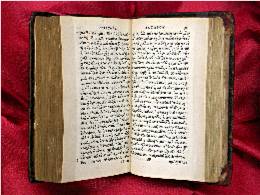
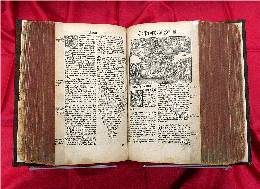
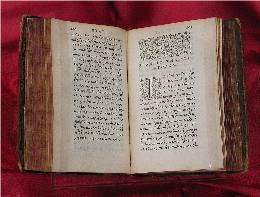

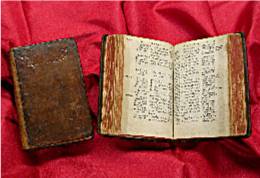
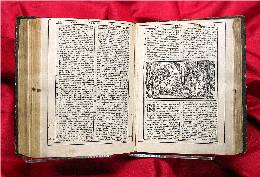
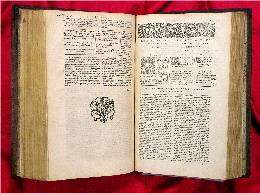
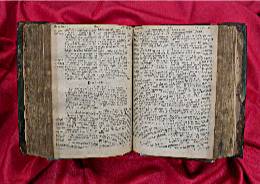
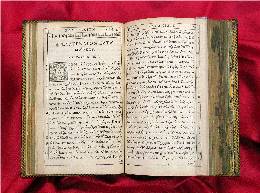
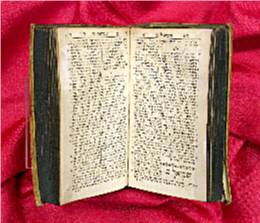
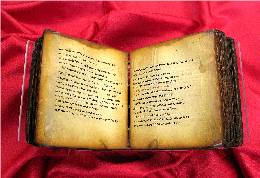
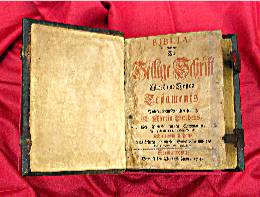
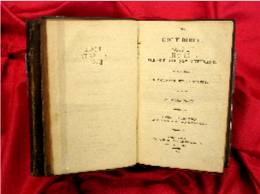
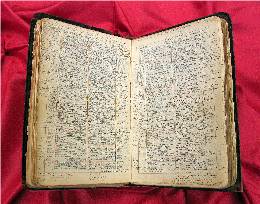
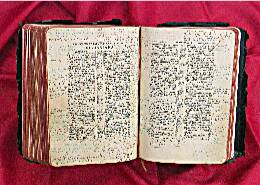
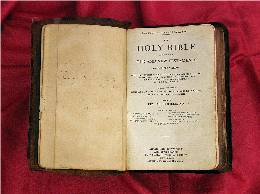
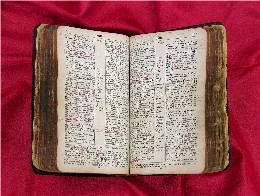
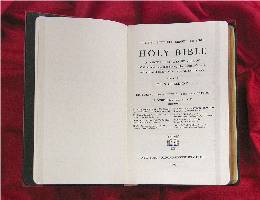
 dts.edu
dts.edu